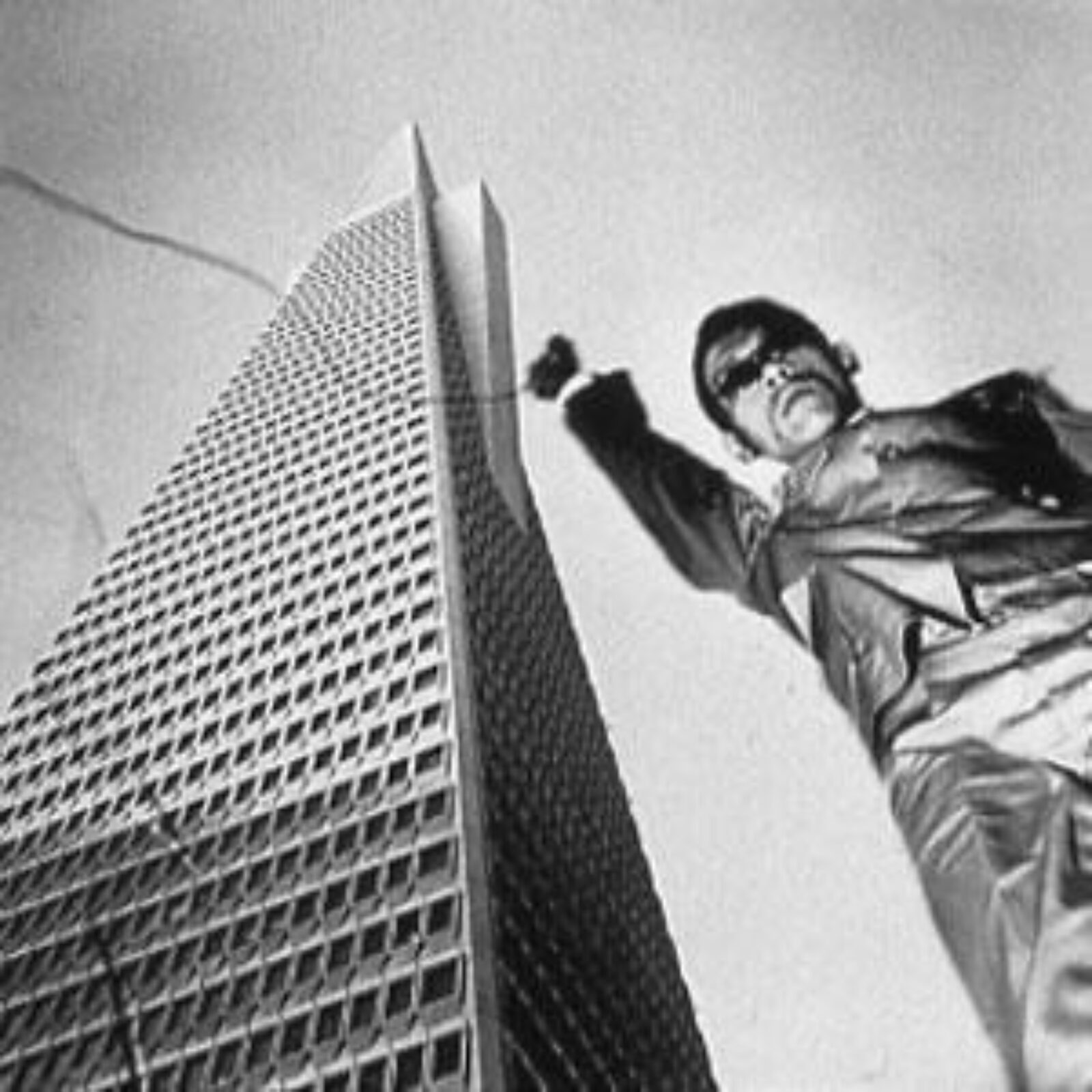


















featured gallery for January 2007
Energy
A Selection by the Tisch School of the Arts, Department of Photography and Imaging's Summer High School Program
This month's web gallery was spiritedly curated by a group of 16 teenage photography students. The students came from all over the United States to study in the Department of Photography and Imaging at New York University's Tisch School of the Arts. In the program, they receive college level studio and critical studies credits and instruction during an intensive one-month residency. ENERGY, is organized by four curatorial teams, selecting from the photo-based artists' works in the Visual AIDS Archive. Each group was asked to work together around the many ideas and meanings related to the word ENERGY. The exhibition concept and curatorial choices were derived through individual and group writing and discussion exercises.
Working with the Visual AIDS Archive was consciousness raising on many levels for the students. Through this project, students gained knowledge and insight into curating as a career, how HIV/AIDS is transmitted and treated, what an archive is, intimate access to a not-for-profit arts organization, how to articulate thoughts and feelings in relation to images, how to collaborate, and more. I would like to thank Visual AIDS for its generosity in providing this curatorial opportunity and the artists in the archive for such stimulating work. I would like to also thank Amy Sadao and Nelson Santos for taking their time to answer students' questions related to the archive, the organization, possible career paths and sharing their personal experiences and their space with such a large and energetic group of students. This opportunity is one that has and will continue to reveal new lessons learned at different stages in these 16 students' lives.
Thanks also to: Jennifer Lehe, Ifetayo Abdus-Salam, Benjamin Harrison, Lauren Fabrizio, Katie Kline, and Ariel Goldberg, for their commitment as assistant teachers and mentors for the course.
Schuyler Duffy, Kimberly Muirhead, Gabriela Rodriguez, Jordanna Weiner
Energy and vigor allow us to thrive at what we do. Visual AIDS enables artists with AIDS to cultivate energy to produce the art they love. Energy also allows the Visual AIDS artists to endure the hardships of their physical condition. All of these artists come from a diverse background. They have to deal with problems many people will never have to think of, yet they still have the strength to produce beautiful art.
Kurt Weston sees the world as an impressionist painting. Due to AIDS, he contracted CMV retinitis. He became legally blind. He has been able to utilize his hardships to create beautiful pieces of art. In one of his photos, Anger Is Energy, Weston captures the buildup of energy by portraying a nude man who is positioned on all fours, looking as if he is about to attack.
When he first moved to New York, John Morrison was impressed with the city's glamorous energy. After growing up and enduring the hardships of an abusive home, he created his own fantasy world. He chose to document the fringes of society. One of his photos, Dance of the Faeries, illustrates an outcast of society frozen within the blurred motion of the city. He appears as though he is absorbing its energy.
Joel Wateres was a chiropractor for 13 years, yet he used his artistic energy towards his photography. In his photograph Bumper Cars, there are many cars lined up that are about to start a race. This illustrates the buildup of energy before the climactic release of the cars' engines.
Eric Rhein grew up in fear of life, yet through AIDS has discovered the light in human life. His Self Portrait in Armons' Barn portrays a solemn character who calmly walks along as the energy builds up inside him.
After suffering seven strokes and losing his eyesight, John Dugdale realized he can now encounter anything and is no longer afraid. Athletic Love portrays a young man caught in the midst of a handstand at a moment when his energy is strongly focused and waiting to be released.
Energy is not only about its release. It is also about its momentum of strength and power. Visual AIDS helps this power to explode. All these photographers caught moments in which we could all see the potential energy of their subjects. Energy is about the buildup before its exertion. After all, we need to build up before we let go.
Brittany Keema, Hadear Kandil, David Allen, Beatrice Oshodi
Energy is within each and every person. It can be defined as the capacity for work, as well as the exertion of activity and power. The theme of energy was produced based upon things that are most important to us. Through art, energy can be greatly expressed through the use of lines and texture. Among many other components of art, color is very strong in exerting energy. In this case, photography greatly displays energy with the help of vibrant colors from all over the spectrum.
In 2005, an artist by the name of horea greatly used the theme of energy through specific use of highly saturated colors. He experimented with colors by collecting materials and linking them by a common color scheme. In one exhibition, horea linked together many works through the color orange. He collaborates these works with his own to intensify the meaning of the color. This motif of orange, among each work of art, is a great foundation of energy. horea's photograph of his installation Cranes was chosen for our theme of energy because of its sharp saturated colors. He was able to create chaos among graceful paper figures. Bedlam is a result of horea's decision to include such penetrating colors. Therefore, these origami figures symbolize an intense source of power.
Felix Gonzalez-Torres brilliantly uses color throughout his artwork and installations. Exploring his sexuality and political issues among his artwork, Gonzalez-Torres is one of the most influential artists of his time. In 1991, he created a piece inspired by Ross, his lifetime partner, who died six years before him. In Untitled (Portrait of Ross in LA), a pile of candy is the subject. Gonzalez-Torres reinforces that something so simple can be so energetic. Despite the fact that the subject of these images are sculptures, it still does the job of explaining how the use of color is important in conveying a feeling of energy.
Like the other artists we chose, Memphis also uses saturated color as a powerful source of energy. As an African living in America, Memphis tackles global issues on race. The message of his art is still global in everyway, despite the fact that it is referenced to African Americans. In 2003, Memphis constructed a digital picture entitled Cinco Para Siete. We chose this photograph, despite the fact that there is no definite subject, because it exemplifies greatly how to use color to create energy. He also incorporates text into his photo, which are bold colors in themselves. This piece of art is so great in that it poses many questions that don't have answers. Nevertheless, without Memphis' choice of colors, our minds would not alert us with these burning questions and all that there would be is a great lack of vigor.
Tara Popick was born in New York. She soon became a photographer after being diagnosed with HIV. Like the other artists, Popick smartly uses color to convey the feeling of energy. In Evolution, her pinks send off a warm feeling to the viewer.
David King's collage, like the others, displays great usage of color. In Kali Girl (#8), the vibrant blue sky against the black and white face of a young girl results in feelings of calmness and confusion.
In conclusion, the use of color is a great way of portraying energy through photography. Therefore, the images we chose, as curators, each display a vast variety of colors. We learned that different colors evoke different emotions among viewers. Whether black and white or vivid rainbows, the way the artist uses them is essential for constructing a successful work of art.
Lily Avnet, Charley Damski, Andrew Gold, Michelle Watt
Energy, when expressed through art, conveys a certain self-reflection. The artists from Visual AIDS are living with HIV/AIDS; therefore, the manner with which they display the energy in their art is distinctive. The images we have selected display energy through lines and shapes. Tension plays a large role in the arrangement of the photographs. Each individual image contains strong compositional elements that combine to form a visual map for the eye. Geometric figures play a large role in displaying tension in a picture.
The bold diagonals of Tseng Kwong Chi's San Francisco, California not only draw the viewer into the picture, but also capture the anxiety of the lines and the rigidity of the figures in their contrast. Bruce Cratsley's Charlie Descending makes use of diagonals to show a clash between the tilting angle and extreme perspective, which parallels the emotion of the child about to fall off the stairs. Repetition of form also adds to a suspenseful action in building up the energy of an image. In David Wojnarowicz's Untitled, 1988, the reiteration of curves and figures of the buffalo emphasizes the tension of the fall and the vulnerability of the buffalo as they tumble off the cliff. Wojnarowicz's Untitled (still of women's legs), again demonstrates a repetition of form not only in the redundancy of the same picture within one image, but also in the multiple legs and poles that meet at various points. This recurrence of lines suggests another form of tension mimicking the fragile balance of the legs on the small heel of the shoe. The sharp lines of the sprinkler threaten the soft curves of the animal in Elliot Linwood's Sprinkler, also evoking the vulnerability of the animal despite its tough stature.
Within these five images, compositional elements parallel each subjective action with geometric shapes. The figures show the energy and tension communicated between the subject and its surroundings that demonstrate the way these photographers interacted with the world. While living with a debilitating condition, these individuals capture a remarkable and unique form of energy.
Scout Sanders, Hillary Strack, Jordan Hodge, Jonathan Weiner
Human energy -- our energy is everything we inhale and exhale. All of our thoughts, actions, and contributions to the world originate from an internal energy, an acceleration to produce and initiate change. As we release our energy, we also inhale the energy that our environment produces. All of the actions we take and emotions we feel came from past surroundings and experiences. Visual art embodies this exchange of energy, as individual artists' project their internal energy on the world and allow the world to absorb and recycle this energy. For when a viewer sees a photo, they experience their own inhalations and exhalations through their interpretations. The works we selected include: Barbara and In the Garden of Gethsemane by Vincent Cianni, Pearls by Ali, Untitled by Steed Taylor and Peering Through the Darkness by Kurt Weston.
The idea of inhaling and exhaling directly affects the way we humans connect with one another. A mother to her child share the same bodily energy just as a human can physically connect with another human or an individual can connect with his surroundings or environment. The mind can test its ability to sustain as the body tells it to keep on striving. Inhaling and exhaling are the written words of our body, the food for our soul, and the completion of our hearts. Vitality and extension of self cause the human race to connect with one another to create this effect of inhaling as one and exhaling as another.
